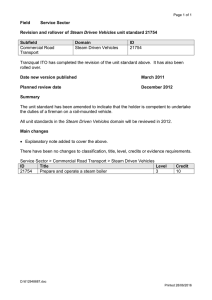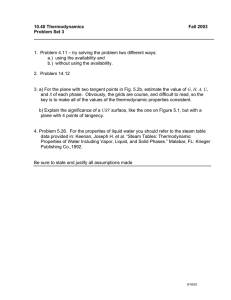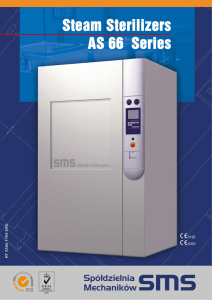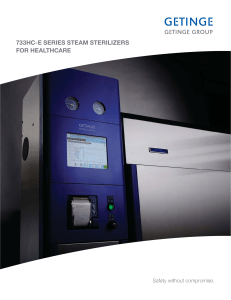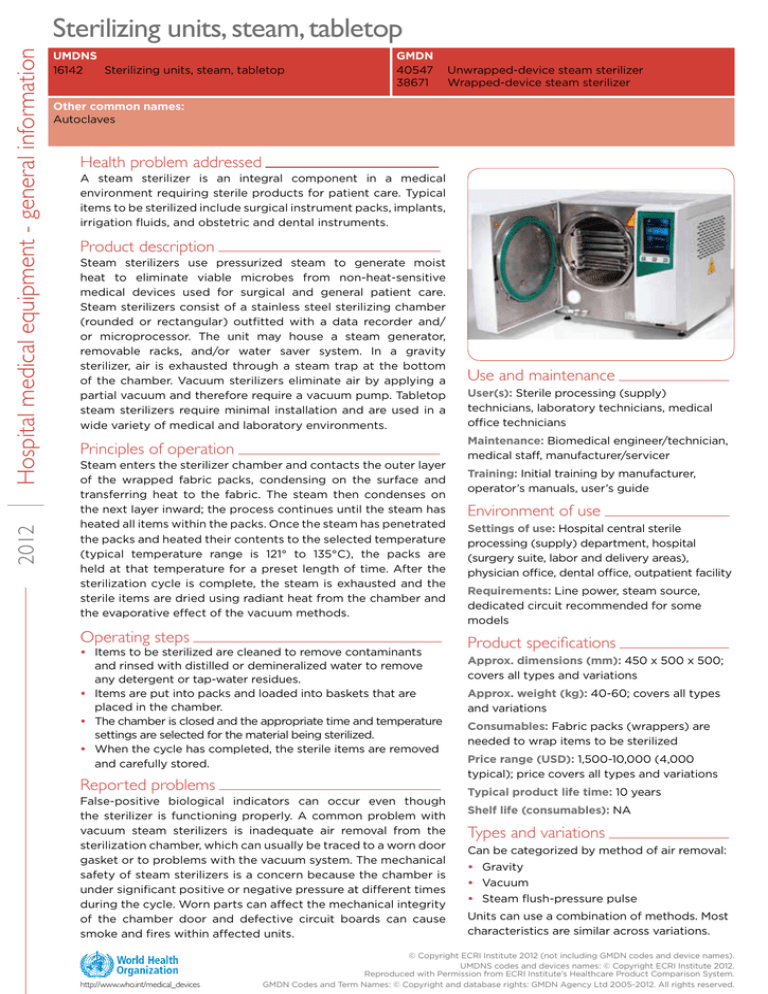
2012
Hospital medical equipment - general information
Sterilizing units, steam, tabletop
UMDNS
16142
Sterilizing units, steam, tabletop
GMDN
40547
38671
Unwrapped-device steam sterilizer
Wrapped-device steam sterilizer
Other common names: Autoclaves
Health problem addressed
A steam sterilizer is an integral component in a medical
environment requiring sterile products for patient care. Typical
items to be sterilized include surgical instrument packs, implants,
irrigation fluids, and obstetric and dental instruments.
Product description
Steam sterilizers use pressurized steam to generate moist
heat to eliminate viable microbes from non-heat-sensitive
medical devices used for surgical and general patient care.
Steam sterilizers consist of a stainless steel sterilizing chamber
(rounded or rectangular) outfitted with a data recorder and/
or microprocessor. The unit may house a steam generator,
removable racks, and/or water saver system. In a gravity
sterilizer, air is exhausted through a steam trap at the bottom
of the chamber. Vacuum sterilizers eliminate air by applying a
partial vacuum and therefore require a vacuum pump. Tabletop
steam sterilizers require minimal installation and are used in a
wide variety of medical and laboratory environments.
Principles of operation
Steam enters the sterilizer chamber and contacts the outer layer
of the wrapped fabric packs, condensing on the surface and
transferring heat to the fabric. The steam then condenses on
the next layer inward; the process continues until the steam has
heated all items within the packs. Once the steam has penetrated
the packs and heated their contents to the selected temperature
(typical temperature range is 121° to 135°C), the packs are
held at that temperature for a preset length of time. After the
sterilization cycle is complete, the steam is exhausted and the
sterile items are dried using radiant heat from the chamber and
the evaporative effect of the vacuum methods.
Operating steps
• Items to be sterilized are cleaned to remove contaminants
and rinsed with distilled or demineralized water to remove
any detergent or tap-water residues.
• Items are put into packs and loaded into baskets that are
placed in the chamber.
• The chamber is closed and the appropriate time and temperature
settings are selected for the material being sterilized.
• When the cycle has completed, the sterile items are removed
and carefully stored.
Reported problems
False-positive biological indicators can occur even though
the sterilizer is functioning properly. A common problem with
vacuum steam sterilizers is inadequate air removal from the
sterilization chamber, which can usually be traced to a worn door
gasket or to problems with the vacuum system. The mechanical
safety of steam sterilizers is a concern because the chamber is
under significant positive or negative pressure at different times
during the cycle. Worn parts can affect the mechanical integrity
of the chamber door and defective circuit boards can cause
smoke and fires within affected units.
http://www.who.int/medical_devices
Use and maintenance
User(s): Sterile processing (supply)
technicians, laboratory technicians, medical
office technicians
Maintenance: Biomedical engineer/technician,
medical staff, manufacturer/servicer
Training: Initial training by manufacturer,
operator’s manuals, user’s guide
Environment of use
Settings of use: Hospital central sterile
processing (supply) department, hospital
(surgery suite, labor and delivery areas),
physician office, dental office, outpatient facility
Requirements: Line power, steam source,
dedicated circuit recommended for some
models
Product specifications
Approx. dimensions (mm): 450 x 500 x 500;
covers all types and variations
Approx. weight (kg): 40-60; covers all types
and variations
Consumables: Fabric packs (wrappers) are
needed to wrap items to be sterilized
Price range (USD): 1,500-10,000 (4,000
typical); price covers all types and variations
Typical product life time: 10 years
Shelf life (consumables): NA
Types and variations
Can be categorized by method of air removal:
• Gravity
• Vacuum
• Steam flush-pressure pulse
Units can use a combination of methods. Most
characteristics are similar across variations.
© Copyright ECRI Institute 2012 (not including GMDN codes and device names).
UMDNS codes and devices names: © Copyright ECRI Institute 2012.
Reproduced with Permission from ECRI Institute’s Healthcare Product Comparison System.
GMDN Codes and Term Names: © Copyright and database rights: GMDN Agency Ltd 2005-2012. All rights reserved.




